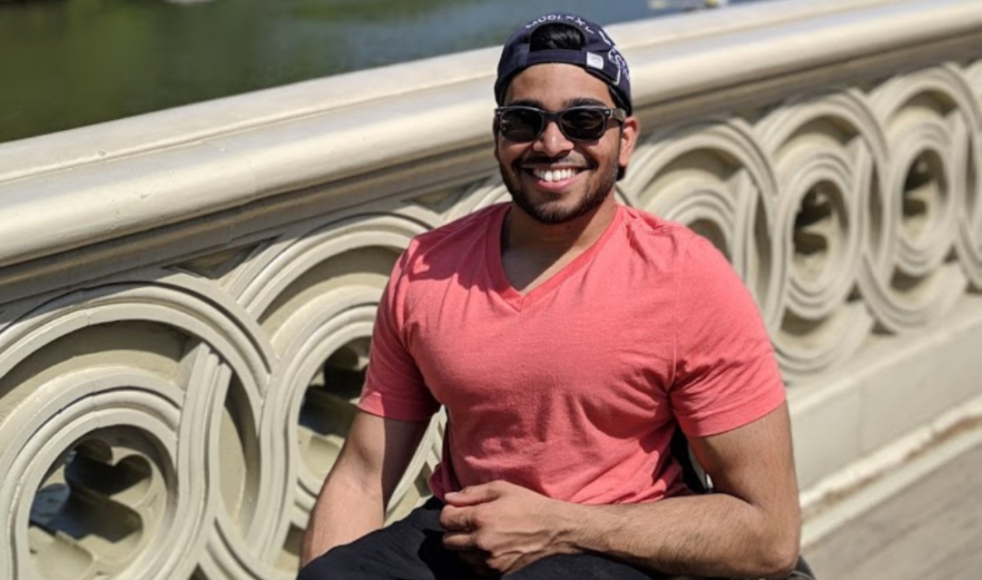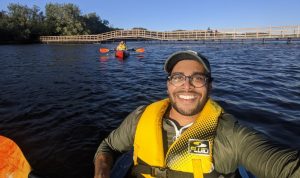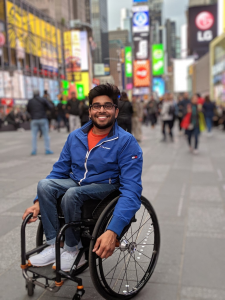“No hard work is ever wasted”

Hisham Mohammed graduated from McMaster’s Faculty of Engineering this year with a degree in electrical and biomedical engineering. An accomplished wheelchair athlete, he’s now heading to Waterloo to start a master’s degree in systems engineering with a goal to use artificial intelligence to design biomedical devices.
Here, he talks about his experiences as an engineer and athlete.
Tell me about your early life
I was born in India in 1994, and my family moved to Saudi Arabia when I was one.
When I was six months old, my mother noticed that I wasn’t very mobile – and they subsequently discovered that I had spinal cord atrophy (which causes paralysis due to malformation of the spinal cord). By the time I was in kindergarten, my parents saw the difficulty of living in Saudi Arabia for me as a disabled person, and in 2002, when I was eight, they dropped their lives there and moved to Canada.
They made the right move – Canada is the ideal country for any child to grow up, because everyone is equal. We may have different abilities, but with the proper assistance and support, any child can achieve their goals.
What got you interested in sports?
I went to Holland Bloorview Children’s hospital, where I participated in a multitude of activities – I got a chance to see people with disabilities hiking, rock climbing and playing basketball. I got into wheelchair basketball, sledge hockey and racing, and played with Variety Village starting in grade 4.
Eventually, I became the top wheelchair racer in the province, and was racing nationally before I got to high school.
In the 2011-2012 season, I was selected for the U23 Canadian men’s wheelchair basketball team, and I competed with them for two years.
When I was considering where to go for university, it was going to be the University of Illinois to play on their NCAA wheelchair basketball team, the University of Toronto for jazz, or biomedical engineering at McMaster.
What made you choose biomedical engineering? Were you able to balance sports and school?
The care I got at Holland Bloorview – which was a holistic combination of occupational and physical therapists, orthopedic surgeons people who specialized in medical devices – made me want to develop the same kind of innovative technology that had been available to me.
 I wanted to contribute to a society where kids with disabilities have the right devices to be successful and pursue their passion.
I wanted to contribute to a society where kids with disabilities have the right devices to be successful and pursue their passion.
I started at Mac in 2014, and I was on the provincial wheelchair basketball team at the Canada Games in 2015. Eventually, though, it was hard to juggle being a professional athlete with being a student, so I had to make some sacrifices.
Your co-op was a real turning point for you. Can you tell me about that?
I did a 12-month co-op at Holland Bloorview – which was kind of like coming full circle, since I was back there, but I wasn’t a patient anymore.
It’s Canada’s largest pediatric rehab hospital, so they have the best scientists, the best clinicians and the most complex cases – it was a great way to see the full scope of biomedical engineering. I was able to work first-hand with patients, clinicians, engineers, therapists and kids to help develop cool technology.
I worked on accessible communications technology for kids who were non-verbal but whose mobility issues may have made it hard to use standard devices to communicate – it was hard for them to speak and physically interact, but they were still active, alert and inquisitive, so we worked on developing a brain-computer interface, as well as other non-invasive ways for them to interact with their environment using their thoughts or their eyes.
I also worked in the Autism Research Centre, exploring ways of detecting autism by using physical responses to emotional exercises and using AI to help improve diagnostic care.
Finally, I worked in prosthetics, helping develop an app that provides haptic feedback to users to improve the use of prosthetic limbs.
Everything just clicked as a result of my co-op.
Where do your own interests in biomedical engineering lie?
So often, most of people’s exposure to biomedical engineering has to do with prosthetics, but there’s a much broader scope than that! I eventually got into learning data science, and for my capstone project in fourth year, I designed a wearable device that learns how an individual walks, identifies weak muscles and targets those muscles with electric stimulation to strengthen them.
Right now, I’m a development engineer for for a tech start-up called ZL Technovation, which develops automated workflows in health care using AI and NLP processing models. It’s helping improve the care that patients receive in the health care system.
I’m going to be starting a master’s in systems design engineering, studying with John McPhee, who, among other things, is Canada Research Chair in multibody systems and is working on a project on sports wheelchair optimization.
I feel like I’ve accomplished things so far, but I also feel more hungry – I have a sense of the direction of where I want to go, and I’m more motivated than ever to learn. My undergrad was an amazing stepping stone, but I’m not done yet – I’ve just scratched the surface of where I want to go.
You graduated from Mac this spring – any reflections?
As a person with a disability, I’ve found the wheelchair can be a social barrier, but only if I portray it that way. Everyone has challenges – I’ve learned to make friends wherever I go. In order to overcome weakness, you find a strength elsewhere, so I’ve honed my extroverted, outgoing personality – uplifting, listening and empowering people.
I’ve learned to dig deep. I’ve had ups and downs – through the lows, I’ve learned to be logical, pragmatic and organized, in order to climb back up and ride the high. I’ve also learned about the importance of purposeful effort – you don’t have to do everything on your own, but getting where you want to go takes effort.
No hard work is ever wasted.

